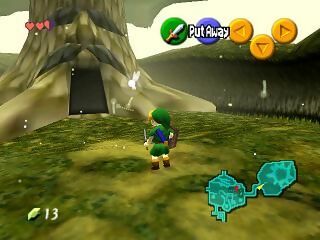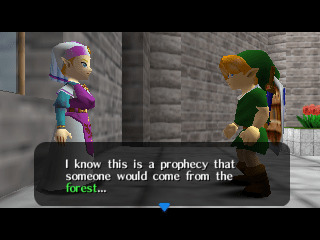
Released on 21st November 1998, The Legend Of Zelda: Ocarina Of Time had a seismic effect on the games industry that is felt to this day.
The Legend Of Zelda: Ocarina Of Time was launched on the Nintendo 64 25 years ago, on 21st November 1998. That’s a long, long time ago, and yet this remarkable game still has an outsize influence on titles being made today.
Context-sensitive buttons and lock-on targeting were both introduced with Ocarina Of Time, and both remain very much a part of the game-maker’s playbook. Going back to this seminal Zelda title now, its open-world gameplay feels familiar, a pattern seen in everything from Assassin’s Creed to Ghost Of Tsushima. Here’s a giant field, here’s a horse, now go have fun.
But if you imagine what the world was like 25 years before Ocarina Of Time was released, it’s remarkable to think what a leap it was, what a revolution. In 1973, the first ever games console, the Magnavox Odyssey, had only just been released the previous year. Twenty-five years on, gamers were exploring huge 3D worlds. It felt like magic. It’s almost inconceivable how far games had come in that time.


The anticipation leading up to the release of Ocarina Of Time was immense. It had been five years since the last Zelda game, Link’s Awakening on the Game Boy, and players pre-ordered Ocarina Of Time in droves, breaking the Guinness World Record for the most advance orders for a videogame. The game ended up selling around 7.6 million copies, meaning roughly a quarter of Nintendo 64 owners bought it. Sales of ocarinas, a musical instrument that was barely known outside Japan, suddenly skyrocketed.
The reviews were simply ecstatic. Ocarina Of Time earned perfect scores from publications including Edge, IGN and Famitsu, and to this day it remains the highest rated game on Metacritic, with a score of 99/100.
That moment when Link first enters Hyrule Field is seared into the memory of a generation. The transition from a narrow, linear path to a wide open space, the sudden realisation that this world is vast and you can go anywhere, was revelatory. And it’s a moment that countless subsequent games have tried to emulate: the time you first emerge from a vault in Fallout 3, taking in the panorama of a desert stretching out before you, owes a debt to Ocarina Of Time.



It’s not the only game that owes a debt to Zelda. Rockstar’s Sam Houser acknowledged the game’s influence on the groundbreaking Grand Theft Auto III, which he called “Zelda meets Goodfellas“. Okami, Legacy of Kain and Darksiders are just a few of the series which have taken direct inspiration from Ocarina Of Time's gameplay.
It could have been very different, though. Ocarina Of Time was originally planned for the 64DD disk drive add-on, but technical issues meant that plan was abandoned in favour of a huge 32MB N64 cartridge. Producer Shigeru Miyamoto initially toyed with the idea of making Ocarina Of Time from a first-person perspective, and memory constraints meant the development team had once planned to make a much smaller title, where different dungeons were accessed via paintings, just like in Mario 64. But a key step was the introduction of the idea of Link riding a horse, Epona. Once that concept was in, the developers added a suitably large space to ride around, and Hyrule Field was born – the game’s defining feature. The rest is history.
We’ve had many breakthrough moments in gaming since the release of Ocarina Of Time in all those years since, not least the unprecedented roleplaying freedom introduced with Baldur’s Gate 3 just a few months ago. But it’s difficult to imagine another game having as much of a seismic change on the gaming landscape as Ocarina of Time did on its release in 1998, a title that laid down the ground rules for how to make games in 3D, and whose influence is still being felt 25 years on.
Read more: Legend Of Zelda | Nintendo announces feature film
Lewis Packwood’s new book, Curious Video Game Machines, about the weird and wonderful consoles people seldom talk about, is available to purchase now from White Owl.








